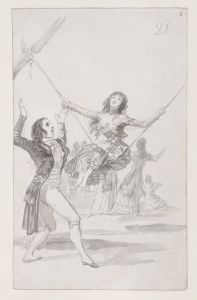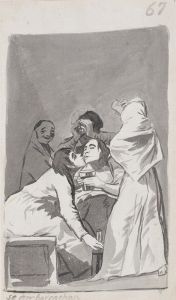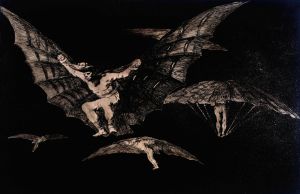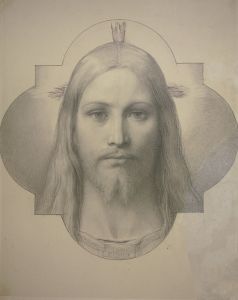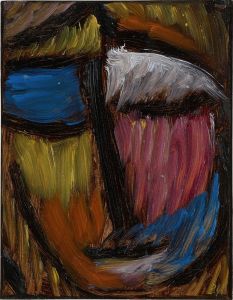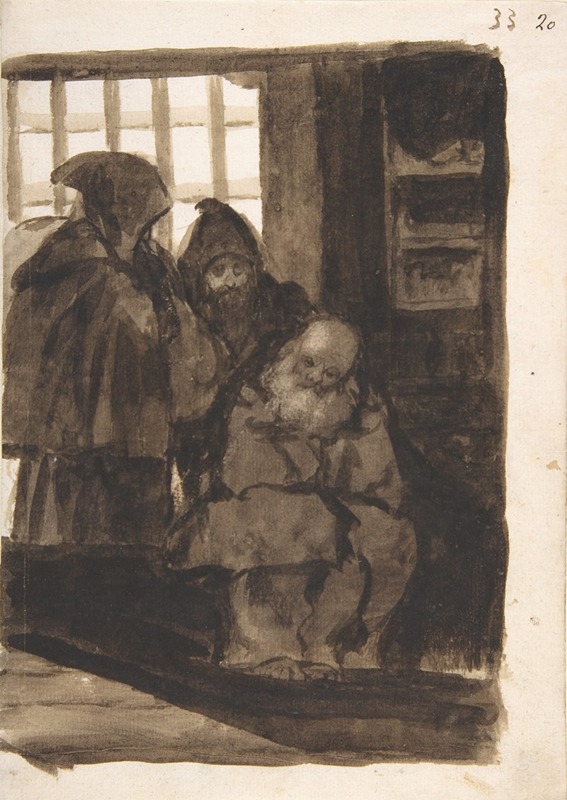
Monks in an interior
A hand-painted replica of Francisco de Goya’s masterpiece Monks in an interior, meticulously crafted by professional artists to capture the true essence of the original. Each piece is created with museum-quality canvas and rare mineral pigments, carefully painted by experienced artists with delicate brushstrokes and rich, layered colors to perfectly recreate the texture of the original artwork. Unlike machine-printed reproductions, this hand-painted version brings the painting to life, infused with the artist’s emotions and skill in every stroke. Whether for personal collection or home decoration, it instantly elevates the artistic atmosphere of any space.
"Monks in an Interior" is a painting by the renowned Spanish artist Francisco de Goya. Goya, who lived from 1746 to 1828, is considered one of the most significant and influential figures in Spanish art history. His works span a wide range of subjects, from portraits of the Spanish aristocracy to scenes of war and social critique.
The painting "Monks in an Interior" is part of Goya's exploration of religious themes, a subject he approached with both reverence and critical insight throughout his career. This particular work depicts a group of monks gathered in an interior space, engaged in various activities. The setting is likely a monastic environment, characterized by its simplicity and austerity, which reflects the monastic lifestyle dedicated to religious devotion and communal living.
Goya's treatment of religious subjects often reveals his complex relationship with the Catholic Church and his critical view of its influence in Spanish society. While some of his religious paintings convey a sense of spirituality and devotion, others are marked by a more satirical or critical tone, highlighting the hypocrisy or moral decay he perceived within the Church. However, without specific documentation or commentary from Goya himself regarding "Monks in an Interior," it is essential to focus on the observable elements within the painting rather than speculate on the artist's intentions.
The composition of "Monks in an Interior" is notable for its use of light and shadow, a technique Goya mastered to create dramatic contrasts and emphasize certain aspects of the scene. The lighting in the painting likely serves to draw attention to the expressions and gestures of the monks, offering insight into their individual characters and the dynamics of their interaction. Goya's skillful use of chiaroscuro not only enhances the visual impact of the painting but also contributes to the overall mood and atmosphere of the scene.
The painting is executed with Goya's characteristic loose brushwork, which allows for a sense of movement and immediacy. This technique, combined with his keen observation of human behavior, enables Goya to capture the nuances of the monks' expressions and postures, providing a glimpse into their inner lives and the nature of their communal existence.
"Monks in an Interior" is a testament to Goya's ability to convey complex human emotions and social commentary through his art. While the painting itself may not be as widely recognized as some of his other works, it remains an important part of his oeuvre, reflecting his ongoing engagement with religious themes and his mastery of the medium.
As with many of Goya's works, the painting invites viewers to contemplate the deeper meanings and implications of the scene depicted, encouraging a reflection on the role of religion and the human condition. Through "Monks in an Interior," Goya continues to resonate with audiences, offering a window into the spiritual and social landscape of his time.





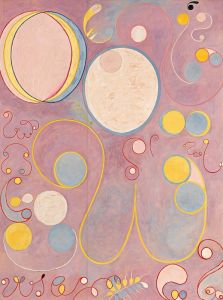

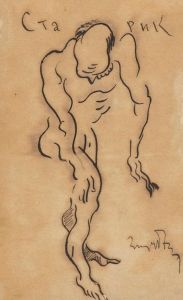
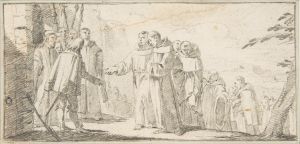

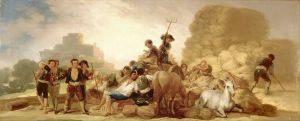
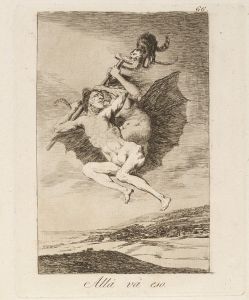
![Without Commending Himself either to God or the Devil [Clear Folly]](/imgs/264672/s/francisco-de-goya-without-commending-himself-either-to-god-or-the-devil-clear-folly-586925f3.jpg)
